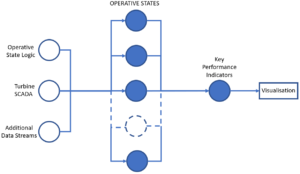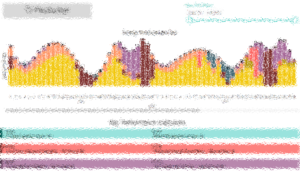By Craig Stout, Graduate Engineer, ORE Catapult
Year one of the EnFAIT project has generated a great deal of valuable data about the reliability and operation of tidal arrays. This data is critical in identifying areas for improvement and aiding decision-making. Key Performance Indicator (KPI) reporting allows for these wide-ranging data streams to be interpreted and transformed into useful and meaningful information. In the context of EnFAIT, converting raw operational data into meaningful KPIs will enable the optimisation of the design and the operations and maintenance (O&M) strategy of this and future tidal arrays.
Key Performance Indicators
KPIs are used worldwide to inform decision-making, measure performance improvement and identify shortcomings in processes and operations. Specifically, in the wind energy industry KPIs focussed on production, availability, reliability and maintenance have been developed and refined into standardised formats for windfarm-wide reporting. Using the pathways developed in (and lessons learned from) the wind industry, Nova Innovation and the Offshore Renewable Energy (ORE) Catapult have adapted these KPIs for use in tidal energy applications. This is made possible through Nova Innovation’s knowledge of the tidal turbine’s design and operation and ORE Catapult’s experience in KPI reporting through the SPARTA and WEBS benchmarking programmes for onshore and offshore windfarms.
KPI Generation
The raw data required to generate operational KPIs for a tidal turbine is:
- SCADA data.
- Accurate predictions of tidal energy resource. and
- A manufacturer’s tidal turbine power curve.
The process of generating operational KPIs for tidal turbines and insight from these data streams is a three-stage process:

1. SCADA data is used to identify operative states
Logic is used to categorise the modes of operation (operative states) of the tidal turbines, differentiating between states such as: full performance, derated performance, downtime due to tidal conditions and downtime due to forced outages.
2. KPIs are generated
Aggregation of the time spent in these operative states is used to calculate KPIs such as downtime and generating hours. Combining accurate tidal energy resource predictions with the known operation of the turbines allows for the calculation of production losses in each operative state (therefore enabling the calculation of production-based availability and capacity factor). Additional KPIs are calculated using the time spent in each operative state.
3. KPIs are visualised and reported
KPIs are reported through interactive dashboards, such as those shown in Figure 2. These dashboards enable clear reporting of the operational performance of the turbines and provide a visual and interactive means to interrogate the underlying data.

How are KPIs being used?
The common barriers experienced in the offshore wind industry caused by poor cooperation between Original Equipment Manufacturers (OEM) and Owner/Operators are bypassed when working on a novel project such as EnFAIT. Nova Innovation is both the OEM and the Owner/Operator, which enables access to data, an understanding of the control logic of the turbines and insight into the specific requirements for reporting. This has allowed for rapid progress in the area of data analysis and KPI reporting.
The EnFAIT KPIs are now being used to analyse periods of better-than-expected operations and identify aspects for potential improvement, so that designs and maintenance approaches can be improved.
The process of creating systems to record KPIs has also allowed Nova and ORE Catapult to develop a better understanding of what tidal turbine and array data should be recorded and how. This is informing the design of data systems for the expanded tidal array.
The logic, data-streams and use of these KPI processes will be updated regularly throughout the EnFAIT project. The aim is to provide information to benefit the project and to potentially standardise operational KPI reporting in the tidal industry. This will baseline the way data is used in the sector and drive tidal energy towards a competitive future.

